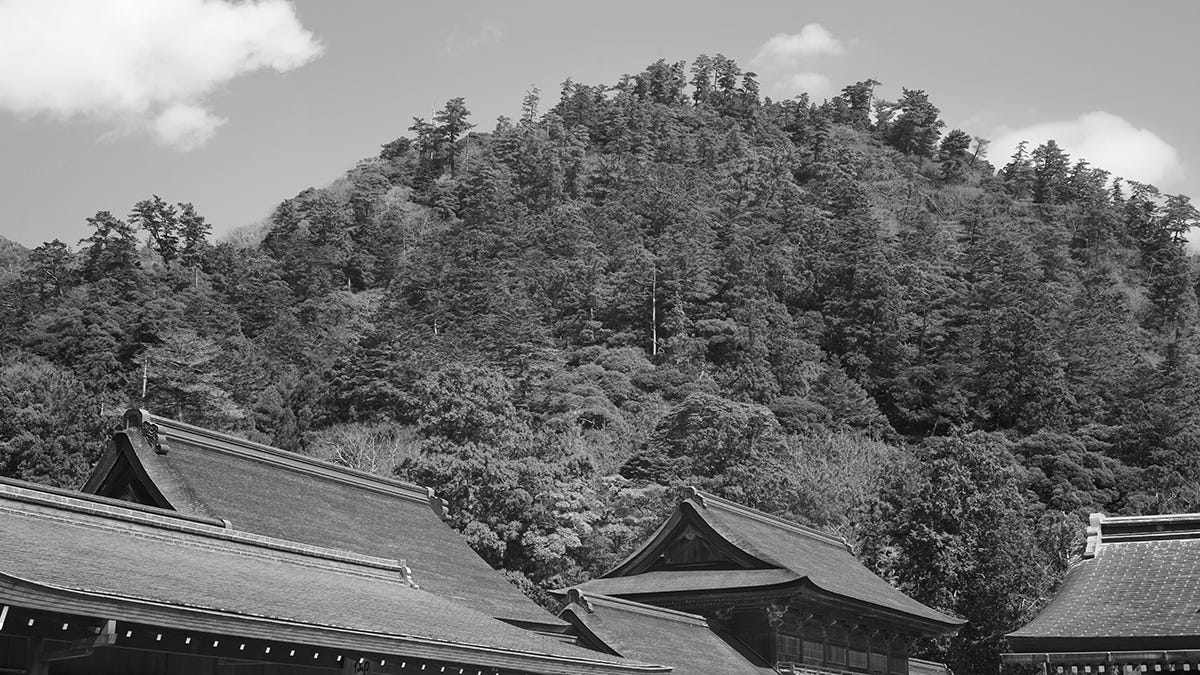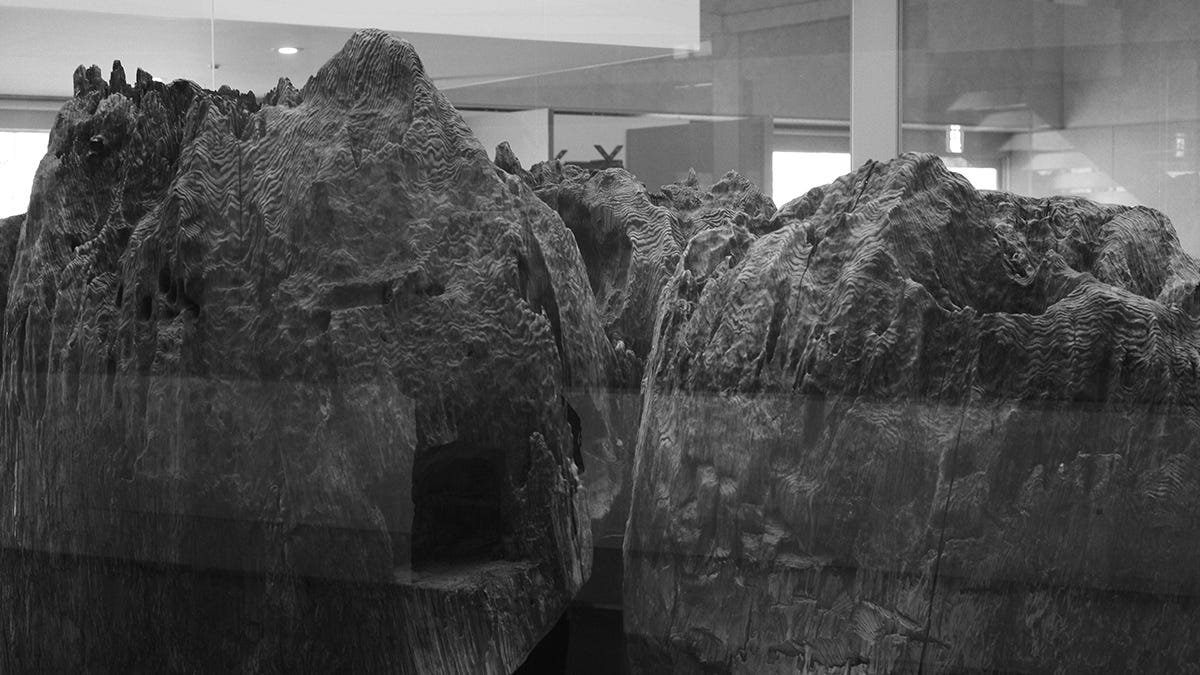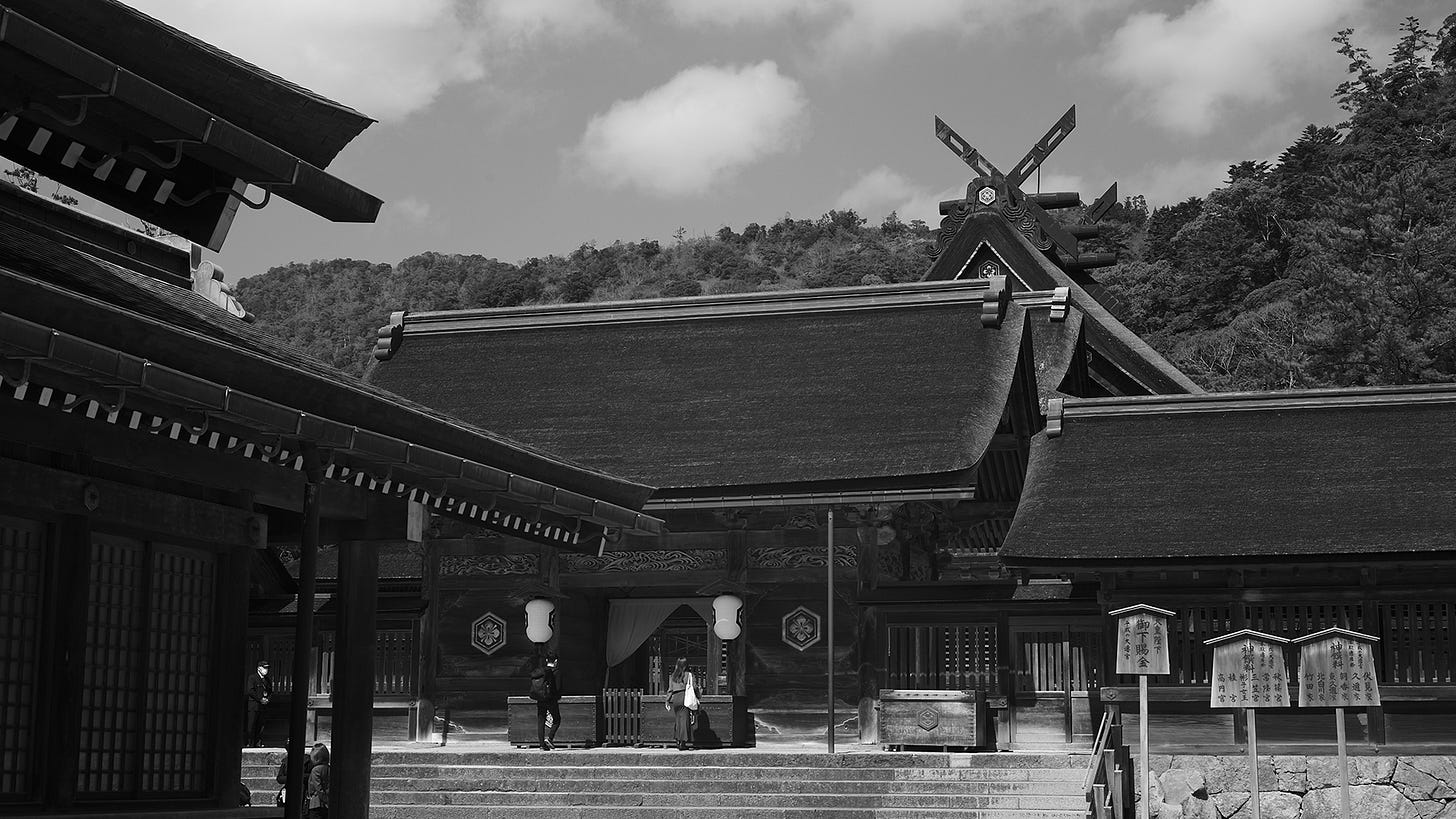Unlocking Ancient Japan’s Mysteries in Izumo Taisha
Izumo and the Lost Kingdom of Japan’s Sea of Japan Coast Part.1
This past week, I traveled extensively through Hiroshima, Omishima, Okayama, Tottori, and Shimane, thoroughly investigating the Setouchi and San’in regions. The journey aimed to explore ancient Japanese history, folk art (mingei), and innovative Confucian scholars of the Edo period. Among these topics, it was the reality of ancient San’in that provided the most profound insights.
San’in, comprising the Japan Sea coastal areas of Tottori and Shimane prefectures, is relatively unknown to Western audiences, aside from tourist hotspots like Izumo Taisha shrine in Shimane and the Tottori Sand Dunes. While today’s San’in faces significant depopulation and decline, in ancient times it was among Japan’s most crucial regions. For anyone passionate about ancient Japanese history, visiting San’in is highly recommended.
Despite its historical significance, San’in has largely been overlooked by modern academic fields, including archaeology, throughout the 20th century. Consequently, many aspects of its history remain shrouded in mystery. This article, part of a two-part exploration, begins to uncover these hidden layers.
The San’in region played a pivotal role throughout Japan’s formative periods—Jōmon, Yayoi, and Kofun. The cultural complexity, resulting from interactions among diverse ethnic groups, makes unraveling its past challenging. Geographically close to northern Kyushu, Japan’s primary entry point for Chinese and Korean cultures, San’in swiftly absorbed foreign influences. Additionally, direct arrivals to San’in, bypassing Kyushu entirely, were common, contributing further complexity.
San’in was more than just a gateway for foreign cultures; it functioned as a unique melting pot for various Japanese cultural spheres. Modern Japan focuses heavily on Pacific-coast cities like Tokyo, Osaka, and Nagoya, overlooking the historical reality that cities and trade once flourished on the Sea of Japan coast. Key players in this maritime exchange were seafaring tribes from northern Kyushu’s Munakata and Shikanoshima areas. Known for their navigation skills since the Jōmon period, these tribes spread trade and cultural practices nationwide.
Recent discoveries from the last thirty years have dramatically shifted historical views regarding the Yayoi period, revealing San’in’s unprecedented prosperity at that time. Previously thought insignificant during the Yayoi, San’in’s prominence is now undeniable. Strangely, as Japan transitioned into the Kofun period, San’in quickly declined, and its people seemingly erased traces of their own existence, shifting historical focus to Kansai areas such as Nara, Osaka, and later Kyoto. Since then, San’in has rarely appeared prominently in historical narratives, leaving much undiscovered.

Historically, San’in garnered attention primarily through Jōmon-era studies, due largely to Izumo Taisha, one of Japan’s oldest shrines, located in Shimane. Ancient myths recorded in the Kojiki and Nihon Shoki indicated a powerful entity centered around Izumo, reinforcing the region’s prehistoric importance. With minimal Yayoi discoveries, the prevailing assumption was that Izumo’s power peaked in the Jōmon period, diminishing significantly afterward.
However, between the late 20th and early 21st centuries, groundbreaking archaeological discoveries transformed this narrative. New findings revealed evidence of a vast ancient kingdom in Yayoi-era Izumo. Today’s Lake Shinji, spanning about 45 kilometers near Matsue in eastern Shimane, once extended westward into ancient Izumo. Additionally, south of Izumo Taisha near the Sea of Japan coast, an enormous lagoon called Lake Jinzai, connected directly to the ocean, has been confirmed.
Visitors entering Izumo Taisha today notice that Shinmon Street, lined with tourist shops southward from the shrine entrance (known as Seidamari / 勢溜), slopes sharply downhill.
This topography indicates Izumo Taisha was built on elevated ground, overlooking what once was a lagoon. Geological data confirms that the shrine’s location has continuously remained terrestrial since the Jōmon period, highlighting Izumo Taisha’s longstanding importance as a gateway inland.
Moreover, ancient traditions preserved by Izumo Taisha’s priests describe an enormous shrine building that once towered at a remarkable height of 48 meters—double the height of today’s structure, itself Japan’s tallest shrine building at approximately 24 meters. From the Edo period onward, scholars debated the truth of this legend, with modern skepticism largely dismissing it due to lack of concrete evidence.

This skepticism abruptly ended in 2000, when massive pillar remains were accidentally discovered near Izumo Taisha’s main shrine. These remains precisely matched ancient blueprints preserved by the shrine’s priests, confirming that the legendary structure indeed existed. Radiocarbon dating placed these pillars precisely around 1248, consistent with historical records from the Kamakura period. Today, these artifacts are exhibited at the Shimane Museum of Ancient Izumo, adjacent to the shrine.

While this discovery is partial, scholars believe older, undiscovered remains likely lie beneath Izumo Taisha grounds. This groundbreaking find renewed global interest in ancient Izumo’s towering shrine, a unique structure unparalleled anywhere in the world, suggesting Izumo hosted a technologically advanced culture unlike any other in ancient Japan.
Imagine the dramatic sight greeting travelers arriving via the main sea route into ancient Shimane: a gigantic shrine rising above the horizon, visible from far offshore. The shrine likely served as both a landmark for seafarers from Korea, China, and other parts of Japan and as a powerful spiritual barrier—a “kekkai (結界)”—to ward off potential invaders. Such invisible spiritual boundaries were integral to the Yayoi people’s worldview.
This ancient prosperity is still palpable today in Izumo Taisha’s annual Kami-mukae-sai (神迎祭, Welcoming of the Kami Festival), Japan’s oldest ritual event. Held for one week starting on the 10th day of the 10th lunar month, this festival celebrates kami traveling from across Japan by sea to Izumo. Priests welcome these kami at Inasa-no-Hama beach near Izumo Taisha, guiding them with fires into the shrine, where they remain for the festival week.

In fact, the 10th lunar month is still called Kannazuki (神無月, “Month Without Kami”) across Japan, signifying that local kami depart for Izumo. Conversely, in Izumo alone, it is called Kamiarizuki (神在月, “Month with Kami”). These traditional names preserve ancient truths, vividly illustrating Izumo’s central role in early Japan.
What was ancient Izumo truly like? This deeply intriguing past is gradually becoming clearer through extensive research. In the next article, we’ll delve deeper into the romantic mysteries of ancient Izumo.






